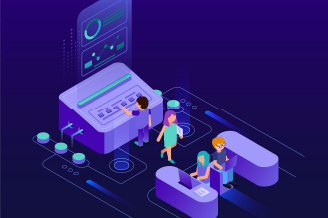Game Design: Game design is a critical aspect of game development. It involves creating the rules, mechanics, and overall structure of a game. Game designers must have a strong understanding of player psychology, game theory, and user experience design. They must also have excellent communication skills to work effectively with other members of the development team.
Programming: Programming is another critical component of game development. Game programmers are responsible for writing the code that makes a game run. They must be proficient in programming languages such as C++, Java, and Python. Game programmers must also be familiar with game engines such as Unity and Unreal Engine, which provide a framework for building games.
Graphics:
Graphics are a critical part of game development. Game artists are responsible for creating the visual elements of a game, including characters, environments, and special effects. They use tools such as Photoshop, Maya, and 3DS Max to create stunning 2D and 3D graphics.
Sound:
Sound is another essential component of game development. Game sound designers are responsible for creating the sound effects and music that enhance the player's experience. They use tools such as Able ton Live and Logic Pro to create and edit sounds.
User Interface: The user interface is the way that players interact with a game. Game designers and user interface designers work together to create intuitive and engaging interfaces that make it easy for players to navigate a game. They use tools such as Sketch and Adobe XD to create wireframes and prototypes of the user interface.
Here are some tips for starting a successful game development blog:
1. Define your niche: There are many aspects of game development, such as programming, art, design, sound, and marketing. Choose a specific area to focus on and become an expert in that field.
2. Create valuable content: Your blog should provide valuable and informative content that your readers can't find anywhere else. Share your experiences, insights, and knowledge to help your audience learn and grow.
3. Use visuals: Games are a visual medium, so use screenshots, concept art, and other visuals to illustrate your posts. This will make your blog more engaging and help your readers better understand your ideas.
4. Engage with your audience: Encourage your readers to comment and share their own experiences. Respond to comments and questions to build a community around your blog.
5. Network with other game developers:
Attend game development conferences, join online forums and groups, and reach out to other game developers to build relationships and collaborate on projects.
6. Be consistent: Post regularly and on a consistent schedule to keep your readers engaged and coming back for more.
7. Promote your blog: Share your blog posts on social media, game development forums, and other relevant websites to attract new readers.
Remember, starting a successful game development blog takes time and effort, but with persistence and dedication, you can build a loyal following and make a name for yourself in the industry. Good luck!




